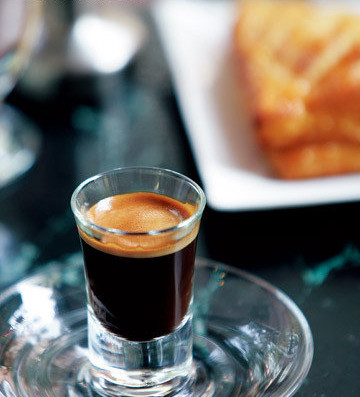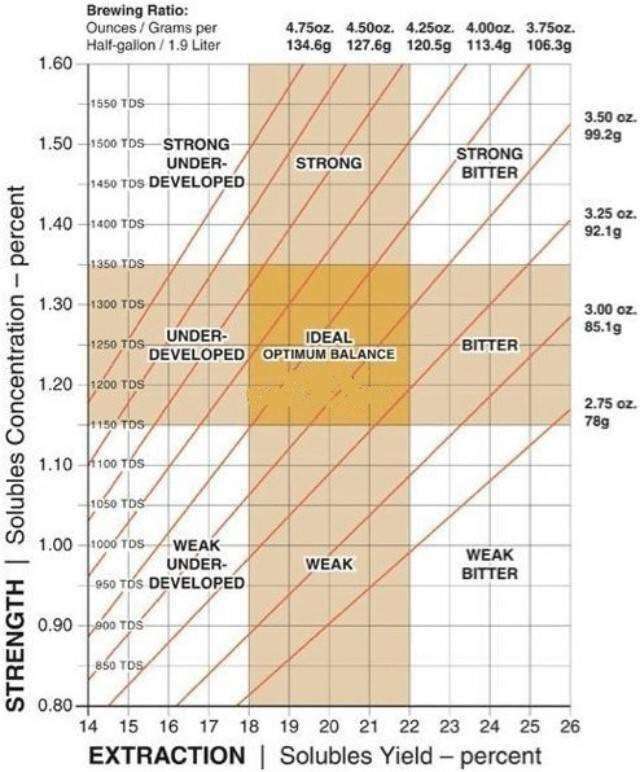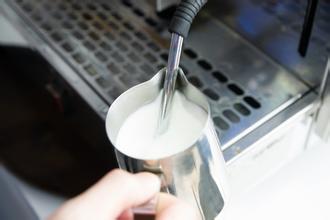What are the characteristics of the overextracted taste of Espresso coffee?
First, what is excessive coffee extraction?
Over-extraction of coffee means that the extraction rate of a cup of coffee is more than 22%. We call this cup of coffee excessive extraction. To put it more colloquially, the coffee is overbrewed and burnt.
Second, what is the taste of over-extracted coffee?
As mentioned in the previous article, the excessive extraction of coffee also means that we have extracted some substances from coffee beans that we do not need, which will make the taste and flavor of coffee worse, while some of the aromatic substances of coffee have been boiled away.
Usually a cup of over-extracted coffee will leave us with the following flavors: bitter, low acid or almost no acid, accompanied by a little burnt taste, coffee has astringent taste, miscellaneous taste.
Let's explain a little bit about the taste above:
It is a bit presumptuous to say that a cup of coffee is over-extracted just from the point of view of heavy bitterness, low acid point or almost no acid. After all, some coffee beans have a low acid point. Therefore, this point needs to be used in conjunction with several others.
The fact that coffee is burnt can be used as a basis for over-extraction of coffee. When coffee is boiled and burnt, it is usually over-extracted.
Coffee has astringent taste, which can not be used as the only condition to judge whether coffee is over-extracted. If a coffee bean is too fresh and contains a lot of carbon dioxide, it will also make coffee astringent. This needs to be used in conjunction with other conditions.
Coffee has a mixed smell, which can not be used as the only criterion for over-extraction of coffee. If there is a problem with the roasting of a coffee bean itself, there may also be a miscellaneous smell.

Source: Zhiyu Coffee
Important Notice :
前街咖啡 FrontStreet Coffee has moved to new addredd:
FrontStreet Coffee Address: 315,Donghua East Road,GuangZhou
Tel:020 38364473
- Prev

SCAA American boutique coffee association coffee brewing gold gouache proportion explanation
[guide] the ratio of SCAA fine cup coffee defined by the American Fine Coffee Association and the scae European Fine Coffee Association must be about 20% of the coffee extraction rate, while the TDS is about 1.1% to 1.3%. For Drip Filter drip brewing, how to extract the best SCAA fine cup coffee defined by the American Fine Coffee Association and the scae European Fine Coffee Association.
- Next

What is the most suitable milking temperature for coffee? Teach you the skill of measuring the temperature of milk bubbles by hand
First, the most suitable temperature for milk bubbles when the milk foams on the coffee machine, the suitable temperature yesterday was controlled in the range of 60 degrees to 70 degrees. The reason is: 1. If the temperature of the milk is lower than 60 degrees, the temperature of the coffee will be much lower, affecting the taste; 2, the lactose in the milk between 60 degrees and 70 degrees will be excited to make the coffee more fragrant, sweeter and smoother. 3. Milk above 70 degrees
Related
- What is the meaning of lactic acid fermentation with coffee bean treatment?
- How to judge the state of foam by sound?
- How does the latte pull out the unicorn pattern? Come to get for a little trick to improve the flower pull!
- Will flower pulling affect the taste of the latte?
- Do you know the history of coffee?
- The difference between honey treatment and sun washing what is raisin honey treatment?
- What kind of milk can a novice use to make coffee foam to keep the foam longer? The correct method and skills of milking tutorial sharing
- Why do washed coffee beans taste sour? Flavor characteristics of washed Coffee
- Introduction to the skill of how to practice the size and height of water injection around the circle of hand-brewed coffee
- How do beginners practice coffee flower drawing from scratch?

